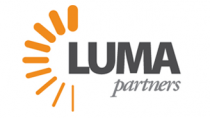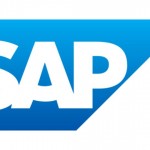広告テクノロジーが、高度化・複雑化していく中、価値あるものを提供するには?(英文)
As we begin 2013, we have already seen activity that points towards a shakeout in the advertising technology industry.
In the space of one week, we saw MediaMath buy Akamai’s Advertising Decision Solutions unit, AppNexus secure $75m funding, part of which will be used for acquisitions, and ad exchange business adBrite shut down its operations.
And we are likely to see greater industry consolidation as we continue through the year. So what’s important when it comes to technologies in today’s ad tech environment?
This made me think back to Mike Shield’s ‘Ad Wreck’ article in Adweek last year, a piece that had really resonated and made me stop and think about where we are as an industry.
There are a number of areas here that are incredibly pertinent and need to be borne in mind, especially as we are likely to see greater industry consolidation as we continue through the year.
Those of particular importance to my mind are:
We like to trumpet online advertising’s growth rate and how important the industry is, but forget we’re failing to address the real opportunity in front of us, which is locked up in brand dollars.
The industry seems to have its priorities upside down. It has an obsession with the volume end of advertising rather than value side. This focus on remnant and performance means we are out of kilter with the offline world, where the vast majority of money is spent. While over two-thirds of budgets in online are spent on direct response advertising, this is in total contrast to offline, where two-thirds of spend are on branding.
What this means is that globally, while roughly $27bn is spent on direct response advertising online, $266bn of offline spend goes to brand advertising. This surely needs to be addressed by developing technologies and approaches that support the needs of brands to make online work for them.
All this VC investment, all these high company valuations, all the logos that are choking up the LUMAscape are failing to deliver businesses that add any real value on either side of the equation, especially on the sell side.
Put simply, if a tech business is not adding value, it must just be adding cost, so it just becomes like a tax.
In the automated, algorithm-driven, efficient and streamlined promise that technology sells to the market, many businesses seem to need ever-increasing numbers of people to deliver this.
As Tolman Geffs from investment banking firm, JEGI, references in the article, tech businesses “operate more like marketing services firms, which require bodies and manual labor”3. Surely all this technology should be helping simplify the online advertising process, but at times it feels like things are becoming increasingly complex.
As Richard Branson so eloquently put it, “Complexity is your enemy. Any fool can make something complicated. It is hard to keep things simple”. The industry should take heed of these wise words.
Trying to fathom what tech is real (fit for purpose) and what is smoke and mirrors is difficult for many buyers and sellers. If there’s trepidation in their minds about technologies, the issues around businesses morphing themselves into something different to reflect the latest trends or market focus surely just introduces more cynicism and mistrust.
This can’t be good for the industry. Businesses must be true to their roots.
All this raises serious questions around how long this situation can continue. However, it also highlights opportunities and the need for the ad tech industry to adapt in 2013 in order to deliver value.
It’s time to mature and align to value rather than volume by concentrating on unlocking the potential of premium inventory, which will benefit everyone. In spite of the allure of RTB, premium brands want to be associated with premium publishers and content.
This fact offers hope to publishers in an environment where CPMs have been significantly eroded.
With the whole discussion around ad visibility taking centre stage, the implications this has on inventory supply and demand could also benefit publishers by delivering necessary scarcity, which should impact positively on inventory value.
While accepting the concept of viewability as a new metric, publishers need to be very clear with advertisers and agencies that this is very much a brand metric. There needs to be clarity at the outset of any campaign as to whether it is a brand or direct response campaign and the success metric needs to reflect the campaign type.
If not, there is a real risk, for example, that publishers could run a performance campaign and achieve its desired performance goal, but then be challenged by the advertiser that they had failed to achieve a viewability goal and would not be compensated 100%.
For me, the last few years have seen the online advertising market swing too far in favour of the buy-side. Impression-level buying, de-averaging and the rise of RTB have bought an imbalance of power that is ultimately to the detriment of the industry.
Failure to address this imbalance now could lead to the decline of publishers, which will have a fundamental effect on the whole ecosystem. It’s time to bring things back into equilibrium by supporting the needs of premium publishers, putting value rather than volume first and giving them the right tools they need to compete effectively in today’s market.
from:
http://econsultancy.com/us/blog/62101-cutting-out-complexity-to-deliver-value-in-today-s-ad-tech-world










